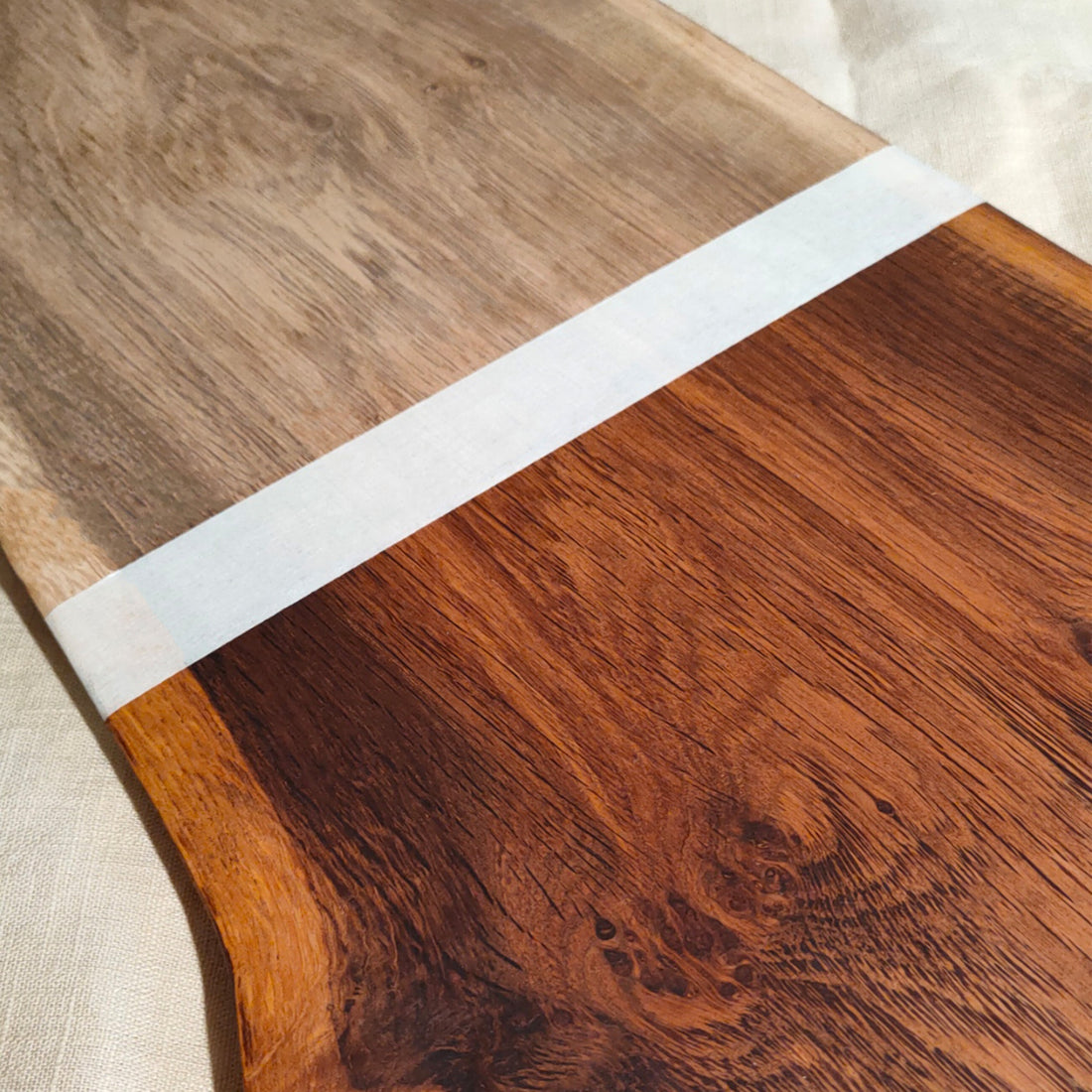
Does the color of wood change when applying wood oil?
Does Wood Change Color When You Apply Wood Oil?
In this article, you'll learn everything you need to know about the question: Does the color of wood change when applying wood oil?
Wood is a living material that has been used for centuries across cultures in architecture, furniture, and art. To preserve its durability and beauty, a variety of treatment methods have been developed over time. One of the oldest and most natural ways to care for wood is by applying wood oil.
Wood oil penetrates deeply into the pores of the wood, protecting it from within. Unlike varnishes or lacquers, it doesn’t form a surface film but impregnates the wood, preserving its natural feel and appearance. It also enhances the grain and gives the wood a warm, rich tone.
Introduction to Oil-Based Wood Treatments
Wood oil seeps deep into the structure of the wood, nourishes the fibers, and protects the surface from external influences. In the process, the grain is brought out more vividly, often resulting in a stronger visual impact. Especially with light-colored woods like pine or maple, oil can slightly darken the tone and give it a warmer appearance.
This color shift happens because the oil fills the wood’s pores and alters how light is reflected. In most cases, this effect is desirable, as it brings out the wood’s natural beauty.
How Does Wood Oil Affect the Color of Wood?
Applying wood oil typically leads to a visible change in color. This effect is often called “bringing out the grain” or “popping the grain.” The natural patterns of the wood become more pronounced, and the color appears richer and deeper. Depending on the wood species and the oil used, the surface may take on a darker, warmer, or even slightly yellowish tone.
Some oils—especially those with a yellow hue like linseed oil—can cause lighter woods such as maple or birch to yellow over time. This effect can be reduced by using oils that contain white pigments, which help preserve the original light tone.
Different Woods React Differently to Wood Oil
Not all woods respond the same way to oil. The wood’s density, porosity, and natural color all influence how the oil is absorbed and how much the tone shifts.
-
Light woods (e.g. maple, birch, ash): These tend to take on a golden or yellow tone when oiled. If you want to preserve the original lightness, a white-pigmented oil is recommended.
-
Dark woods (e.g. walnut, mahogany, teak): These woods usually benefit from oiling, as their deep tones and grain patterns become more vivid.
-
Reddish woods (e.g. cherry, beech): Oiling can bring out their warm, reddish undertones even more.
Types of Wood Oils and Their Impact on Color
There are many types of wood oil available, each with a different effect on the wood’s appearance:
-
Linseed oil: A traditional oil with a yellow tint that enhances grain and adds a warm tone.
-
Tung oil: Known for its transparent, non-yellowing finish – ideal for light woods.
-
Teak oil: Designed for dense hardwoods, it deepens color and offers extra protection.
-
Pigmented oils: These are enriched with color pigments to either enhance or even out wood tones. Great for creative finishes or to match different woods.
Application Techniques and Their Influence on Color
How you apply the oil also affects the final look:
-
Preparation: The wood should be clean and dry. Sanding beforehand (e.g. with 220 grit) smooths the surface and improves oil absorption.
-
Application: Apply the oil evenly using a brush or soft cloth. After 10–30 minutes, wipe off any excess to avoid sticky residue.
-
Multiple coats: Applying several thin layers deepens the tone and improves protection. Allow the wood to dry between coats, and lightly sand between them for a smooth finish.
Is the Color Change Permanent?
Yes, in most cases the color change from oiling is permanent. Over time, the wood may darken slightly due to natural aging and exposure to UV light. However, this happens slowly and evenly.
If you prefer only a subtle change, it’s best to test the oil on a hidden spot or use a clear, non-pigmented oil.
Tips to Minimize Unwanted Color Changes
Not everyone wants their wood to change color dramatically. Here’s how you can keep it subtle:
-
Use colorless or white-pigmented oil: These help preserve the original brightness, especially in light-colored woods.
-
Test on a sample: Always test the oil on a small, inconspicuous piece first to see the final effect.
-
Apply in thin layers: The less oil you apply at once, the more subtle the change. Several thin coats give a more even result than one thick one.
-
Sand between coats: Light sanding can help brighten the surface and ensure even absorption.
Caring for Oiled Wood Surfaces
Once the oil is applied, proper maintenance keeps the surface beautiful and protected:
-
Re-oil regularly: Depending on usage, reapply oil every few months or at least once a year. Heavily used surfaces (like dining tables or kitchen countertops) may need more frequent care.
-
Gentle cleaning: Avoid aggressive cleaners. Use a soft cloth and mild soap—preferably a wood-specific soap.
-
Avoid standing water: Oiled wood repels water, but it’s not waterproof. Wipe up spills quickly.
-
Occasional polishing: Use a soft cloth to gently buff the surface and maintain a smooth, even sheen.
With just a little care, oiled wood stays protected and naturally beautiful for years to come.
Conclusion
Does wood change color when you apply wood oil?
Yes – in most cases, the tone becomes slightly darker and the grain more prominent. But with the right oil, technique, and care, you can control how much the wood changes in appearance.
If you want to preserve a light, natural look, opt for oils with white pigments. For a rich, warm finish, classic oils like linseed or tung oil are excellent options.
Ultimately, wood oil doesn’t just protect your surfaces—it also lets you shape the look and feel of the wood to match your personal style. With the right approach, you’ll have wood that’s both durable and visually stunning.
